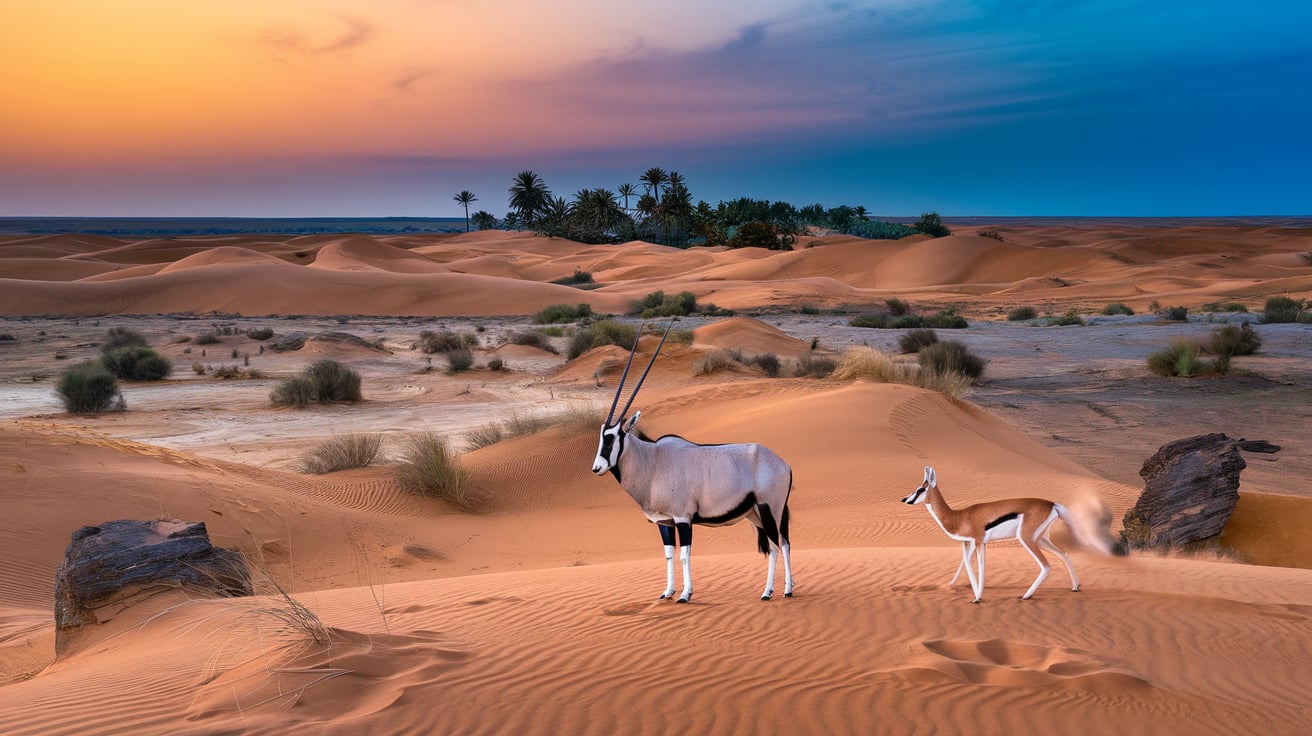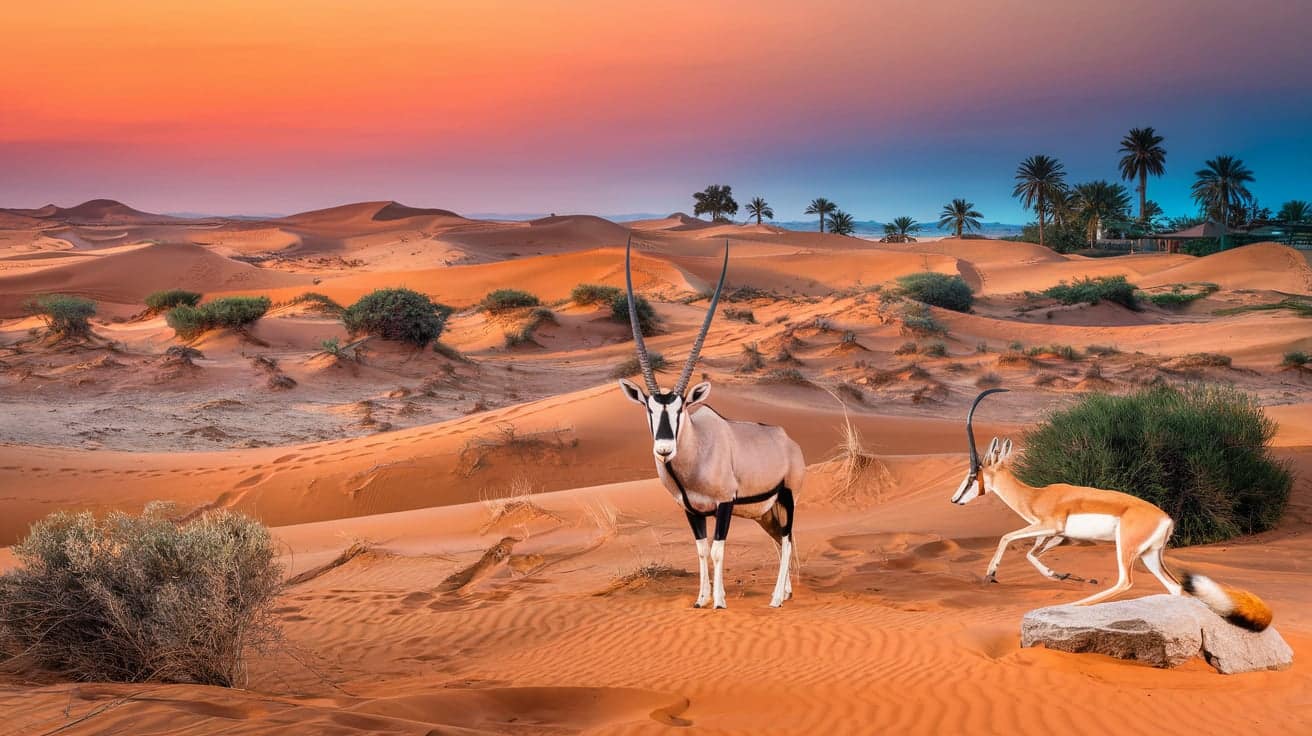Spotting Desert Wildlife: A Guide to the Arabian Fauna
The Dubai desert is synonymous with vast golden dunes and adventures full of excitement. However, behind this marvelous exterior is a very interesting realm of wildlife that managed to carve out a way to survive this harsh environment. Let’s begin this journey and discover some amazing creatures in the Arabian Desert Wildlife.
The Art of Desert Wildlife Observation
Desert wildlife spotting can be so demanding in terms of patience and keen observation. Whereof course one is required to be well-informed of the very habits of the creatures who seem almost perfectly adapted for camouflage. Often letting them fit into their surroundings like a glove.
Most desert safari animals are active during relatively cooler times of the day: early morning and late evening.
Quiet Observation:
There should not be sudden movements or noises that might frighten them away during sighting. A good pair of binoculars allows you to see the creatures without affecting the ability in which you are viewing them and interfering with their natural behavior.
Arabian Oryx:
Long, straight horn and typical white coat, an antelope known to be a brisk runner. One that can run for quite some time without drinking water.
The Sand Gazelle: Amazing, nearly dwarf-like along with their cousins, the Arabian Oryx, these guys can run so frantically fast at up to 60 mph.
Rüppell’s Fox:
This is a small nocturnal Desert Wildlife fox which is well adapted to the desert. Large ear openings dissipate heat and thus protect them from scorching sand. This is a tall fox with bushy tail, providing them shade.
With its oversized ears and sandy fur, the fennec fox is one of the most adorable creatures in the desert safari Dubai. It has adapted to survive in the harsh conditions by digging burrows to escape the heat.
Spiny Mouse:
The little and wonderful rodent having an extraordinary spiny coat, it can apply such a spiny coat as an effective means of self-defence against possible threat factors that may threaten the security of such a creature on Desert wildlife. The rodent has magnificence digging powers making it possible to build complex and deep burrows in sandy ground where it lives.
Reptiles and Insects
There is an equally impressive variety of reptiles as well as species of insects sustained in this vast desert environment. One must keep alert and keenly on the lookout for:
Arabian Sand Boa:
This boas is an interesting non-venomous snake. It has developed to thrive in the desert wildlife conditions. Its particular and loose skin enables the snake very easily to wriggle through the shifting sands of great agility.

The Arabian Horned Viper
possibly one of the most artistic snakes especially in camouflage. It would sometimes bury itself deep into the sand for camouflage.
Scorpion:
There are very interesting nocturnal scorpions thriving in such a multitude of habitats found in the desert wildlife landscape. To say that is true enough-most scorpion stings are not fatal by general standards-and though true enough. Caution is always best exercised and avoided handling them as much as possible.
Sandfish:
This attractive lizard has an awesome and unnatural ability to swim pretty well through grounds of sands. If it finds a threat of a damaging predator or to escape the bright summer sun at desert safari tour, then it can anchor itself deep inside the soil and save itself.
Birds in the Desert
Although the desert safari offer can really appear one of the harshest and least suitable natural habitats for birds, it harbors a large number of species that have amazingly adapted to survive in this challenging and demanding environment. Look out for:
Sandgrouse:
These amazing birds have remarkable feathers adapted for the sole purpose of bringing water back to their nests.
The most characteristic feature that can be found in the hoopoe is simply the unique and distinctive crest and elongated bill, where the birds roam freely in arid and sandy dunes of desert wildlife landscapes.
Larks are sweet little birds with almost diminutive bodies, in which they have evolved to move about the ground.
Responsible and ethical wildlife watching
Learn about the desert wildlife when in a region in which the following accepted general principles of ethics apply: Maintaining a Safe Distance: Since it is a must to maintain a safe distance from the animals because that indeed drives them into tremendous stress and discomfort.
Respect their habitat do not try to disturb or provoke their natural habitat or whatever they are doing. Never Feed Wildlife: Feeding of wildlife can go a long way in disruption of their natural behavior and get them dependent on food supplied by man.
Apart from keeping these wonderful creatures healthy and in good body desert wildlife condition, by implementing and practicing these insightful reminders, a true rewarding experience will definitely be experienced while watching animals in the midst of great sceneries of the desert in Dubai.







